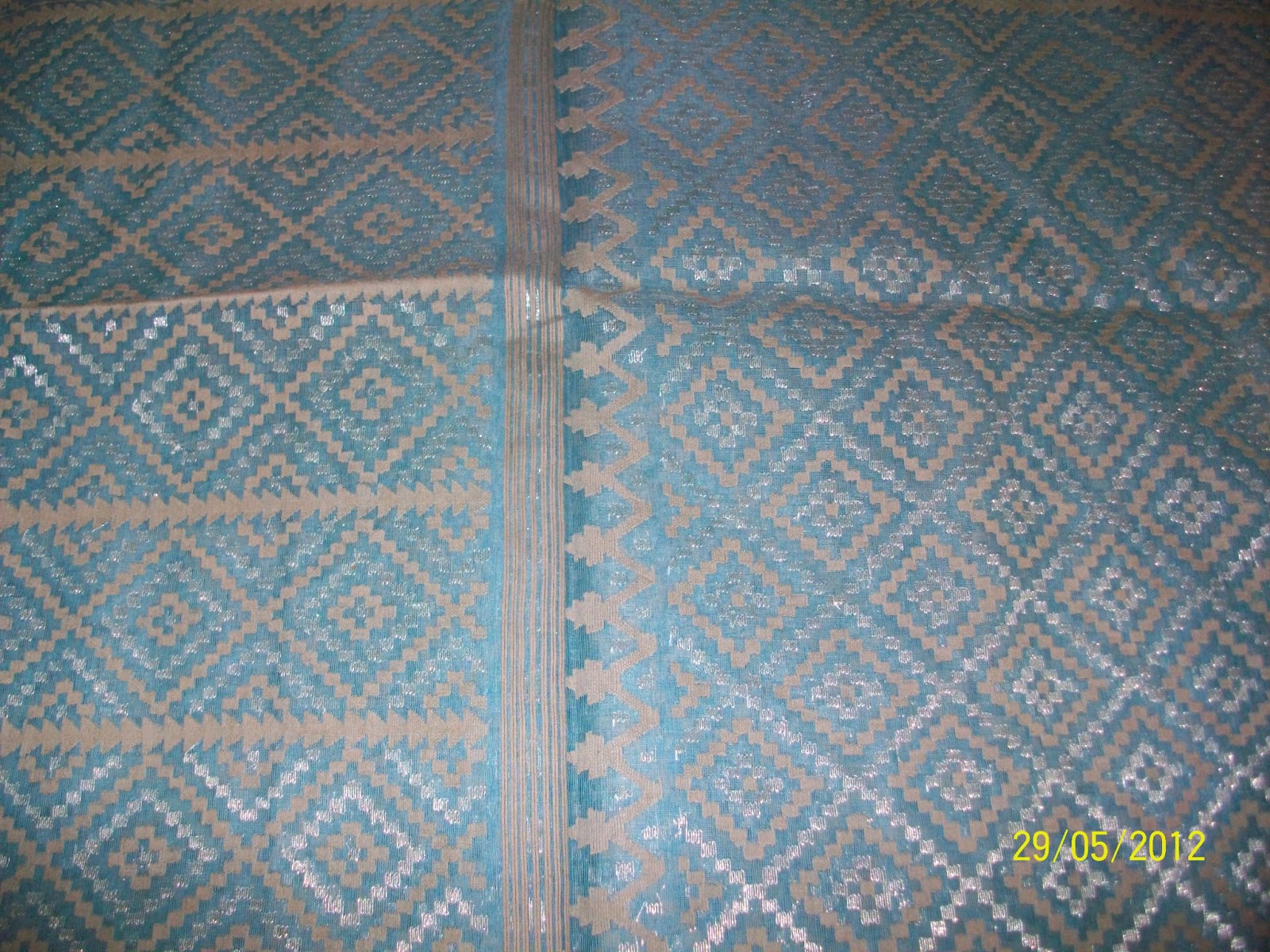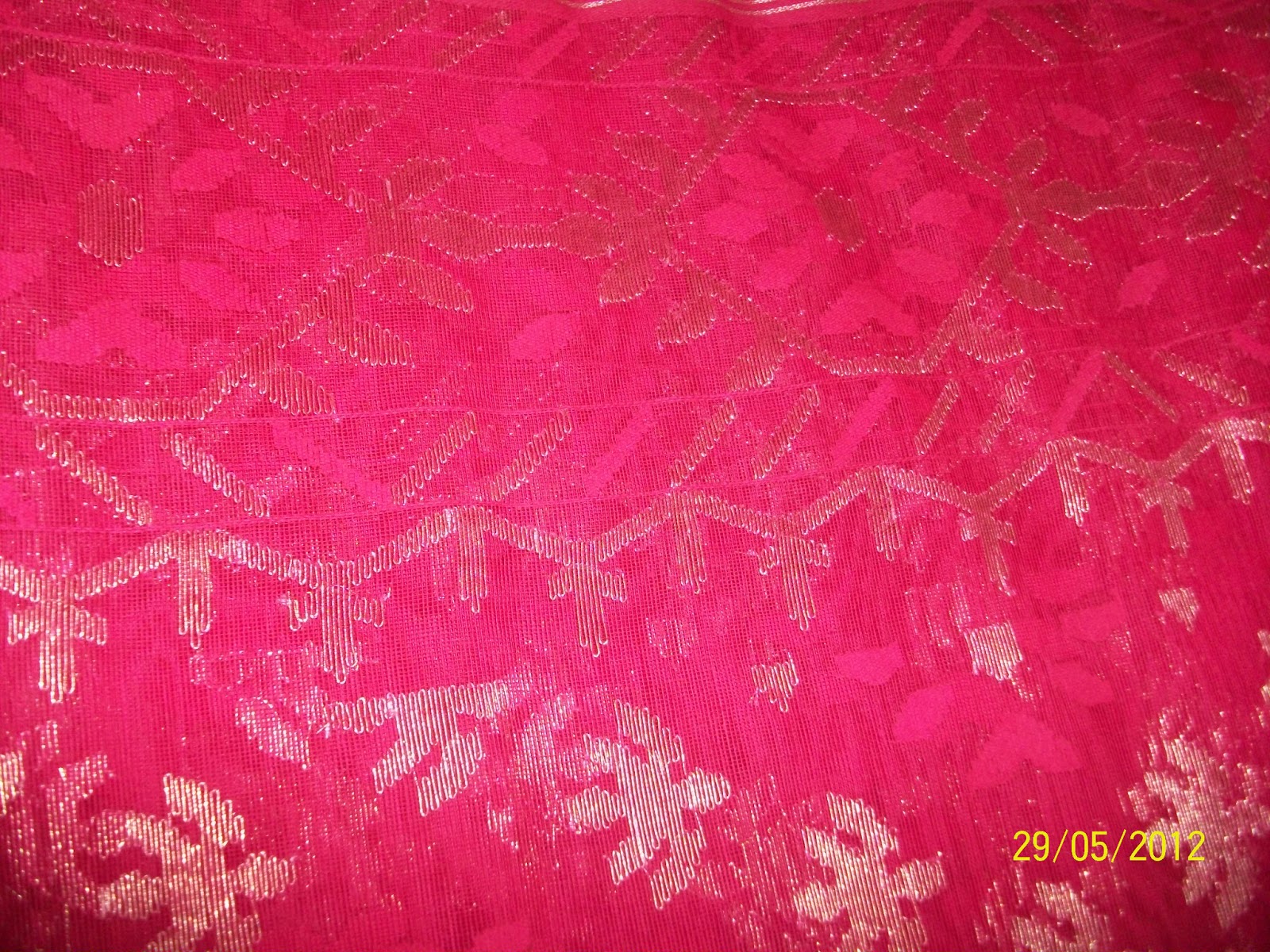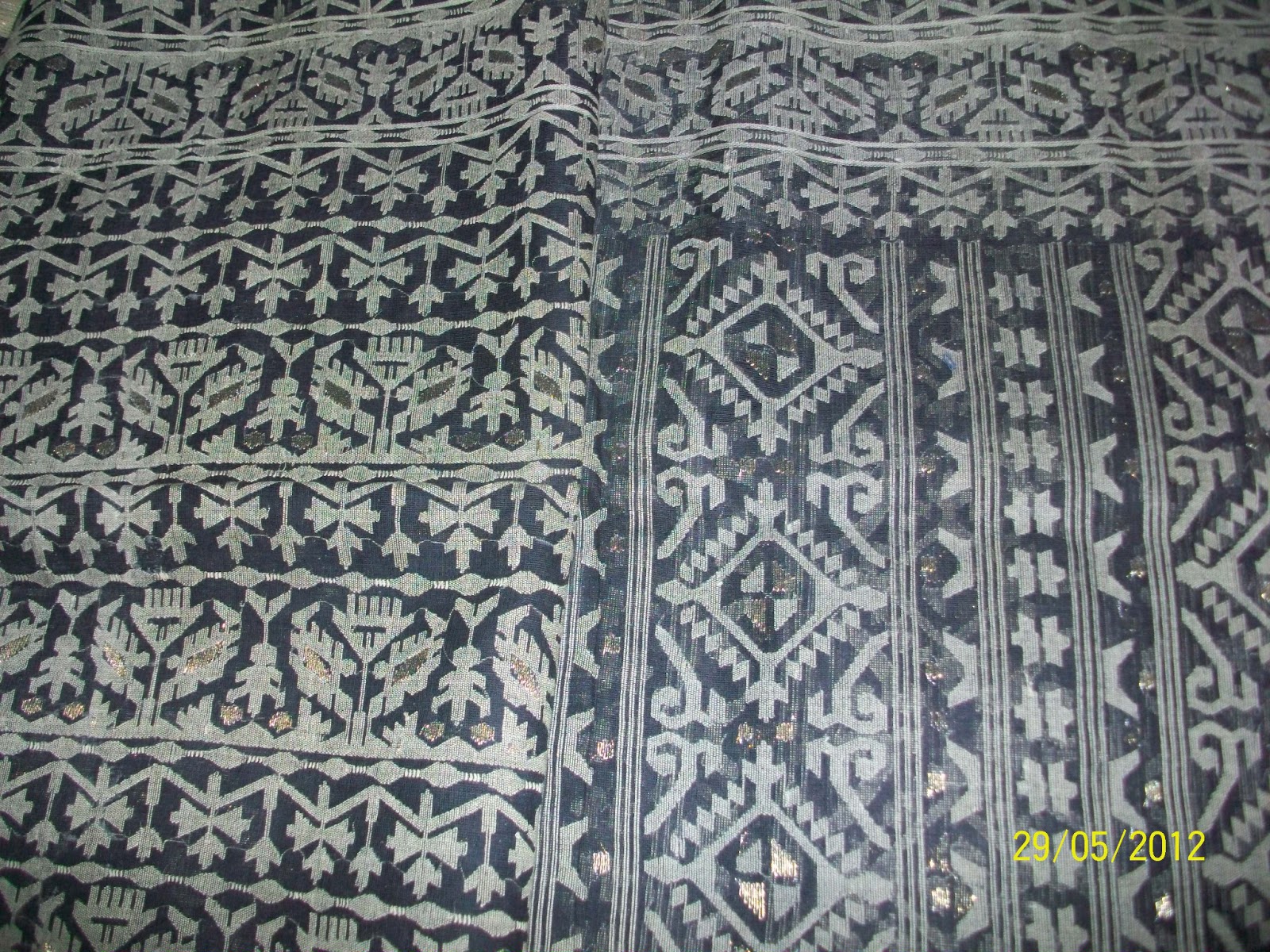History of Jamdani:
The Jamdani weaving tradition is of Bengali origin. It is
one of the most time and labor intensive forms of weaving hand loom weaving. In
the first half of the nineteenth century, James
Taylor described the figured or flowered jamdani; in the late nineteenth
century, T. N. Mukharji referred to this fabric as jamdani muslin.
Weave:
Whether figured or flowered, jamdani is a woven fabric in
cotton, and it is undoubtedly one of the varieties of the finest muslin. It has
been spoken of as the most artistic textile of the Bangladeshi weaver.
Traditionally woven around Dhaka, Bangladesh, and created on the loom brocade, jamdani is
fabulously rich in motifs. Jamdani is a fine muslin cloth on which decorative
motifs are woven on the loom, typically in grey and white. Often a mixture of
cotton and gold thread were/was used.
Etymology:
The word Jamdani is of Persian
origin, from 'Jam' meaning flower and 'Dani' meaning a vase or a container. The
earliest mention of jamdani and its development as an industry is found in
Kautikaya (about 3rd century BC), where it is stated that this was used in
Bangla and Pundra.
Varieties of jamdani work:
Though mostly used for saris, Jamdani is also used for scarves and handkerchiefs. Jamdani is believed to be a fusion of the ancient cloth-making techniques of Bengal (perhaps 2,000 years old) with the muslins produced by Bengali Muslims since the 14th century. Jamdani is the most expensive product of Dhaka looms since it requires the most lengthy and dedicated work.Jamdani patterns are mostly of geometric, plant, and floral designs and are said to originate in Persian and Mughal fusion thousands of years ago. Due to the exquisite painstaking methodology required, only aristocrats and royal families were able to afford such luxuries.
Changes with time:
We do not know exactly when jamdani came to be adorned with
floral patterns of the loom. It is, however, certain that in the Mughal
period, most likely during the reign of either Emperor
Akbar (1556–1605) or Emperor Jahangir (1605–1627), the figured or
flowered muslin came to be known as the jamdani. Forbes Watson in his most
valuable work titled Textile Manufactures and Costumes of the people of India holds that the figured muslins,
because of their complicated designs, were always condidered the most expensive
productions of the Dhaka looms.
Decline and fall:
From the middle of the 19th century, there was a gradual
decline in the jamdani industry. A number of factors contributed to this
decline. The subsequent import of lower quality, but cheaper yarn from Europe, started the decline. Most importantly, the
decline of Mughal power in India,
deprived the producers of jamdani of their most influential patrons. Villages
like Madhurapur and Jangalbari, (both in the Kishoreganj district), once famous
for the jamdani industry went into gradual oblivion.
Current problems:
According to a national daily, a senior taanti or "ostad" earns about Tk 2,500 to Tk 3,000 per month. Junior weavers get much less, around Tk 1,600. As a result many weavers do not want their children to come to this profession. For many, the garments industry offer a lucrative alternative.Thankfully, the government and other organizations are trying to revive the old glory of Dhakai Jamdani. In a bid to avoid the middlemen, they are trying to establish direct contact with the weavers. A Jamdani Palli has been established near Dhaka. Jamdani, one of the oldest forms of cottage industry in Bangladesh, was once was a dying trade. It was successfully revived due to the pioneering work of entrepreneurs such as Monira Emdad. Tangail Saree Kutir along with other sari stores on Baily Road, strive to support the thousands of weavers of Bangladesh who have struggled to keep this age old tradition and fashion alive. Organizations like Radiant Institute of Design, Shanto Mariam University of creative technology, etc. are helping designers create new Jamdani designs.


